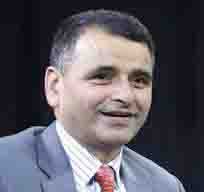
The ongoing crisis has made it even harder for rural people get by
When times are tough, it’s the poor who suffer most—and in today’s age of polycrisis, they need investment more than ever. That’s why IFAD lays the foundations for long-term resilience by transforming rural economies and food systems, making them more inclusive, productive, and sustainable.
But how do we know how much difference IFAD’s work is making? And how should we correct our course, so investments always benefit those who need them most?
Monitoring matters
In Colombia, the Indigenous Peoples Assistance Facility supports indigenous communities. © IFAD/Michael Benanav
Every year, IFAD publishes a Report on IFAD’s Development Effectiveness (RIDE). This examines what our projects have achieved in the short-term: like how many kilometres of road have been constructed. And in the medium- and long-term: how women farmers in Rwanda increased their income through IFAD-funded solar power irrigation systems. It analyses if targets have been met—and if not, why?
RIDE assesses how IFAD is contributing to achieving the Sustainable Development Goals around poverty and hunger and examines how well IFAD processes support effective operations.
This process is crucial for IFAD Member States, who fund our work, and ensures accountability towards reaching the commitments and targets we set together.
What results revealed
The latest RIDE analyses IFAD’s 11th replenishment (2019–2021) to see the difference made to people’s lives.
- 4 million rural people increased their incomes.
- 4 million people improved their agricultural production.
- 4 million people gained better access to markets.
- 2 million people became more resilient to shocks.
- Food security improved by 11 per cent.
- 40 per cent of IFAD staff were based in the countries we serve, so we can fulfil rural people’s needs.
- US$ 3.46 billion was delivered in loans and grants—the highest in our history.
- 74 countries were reached.





प्रतिक्रिया दिनुहोस्